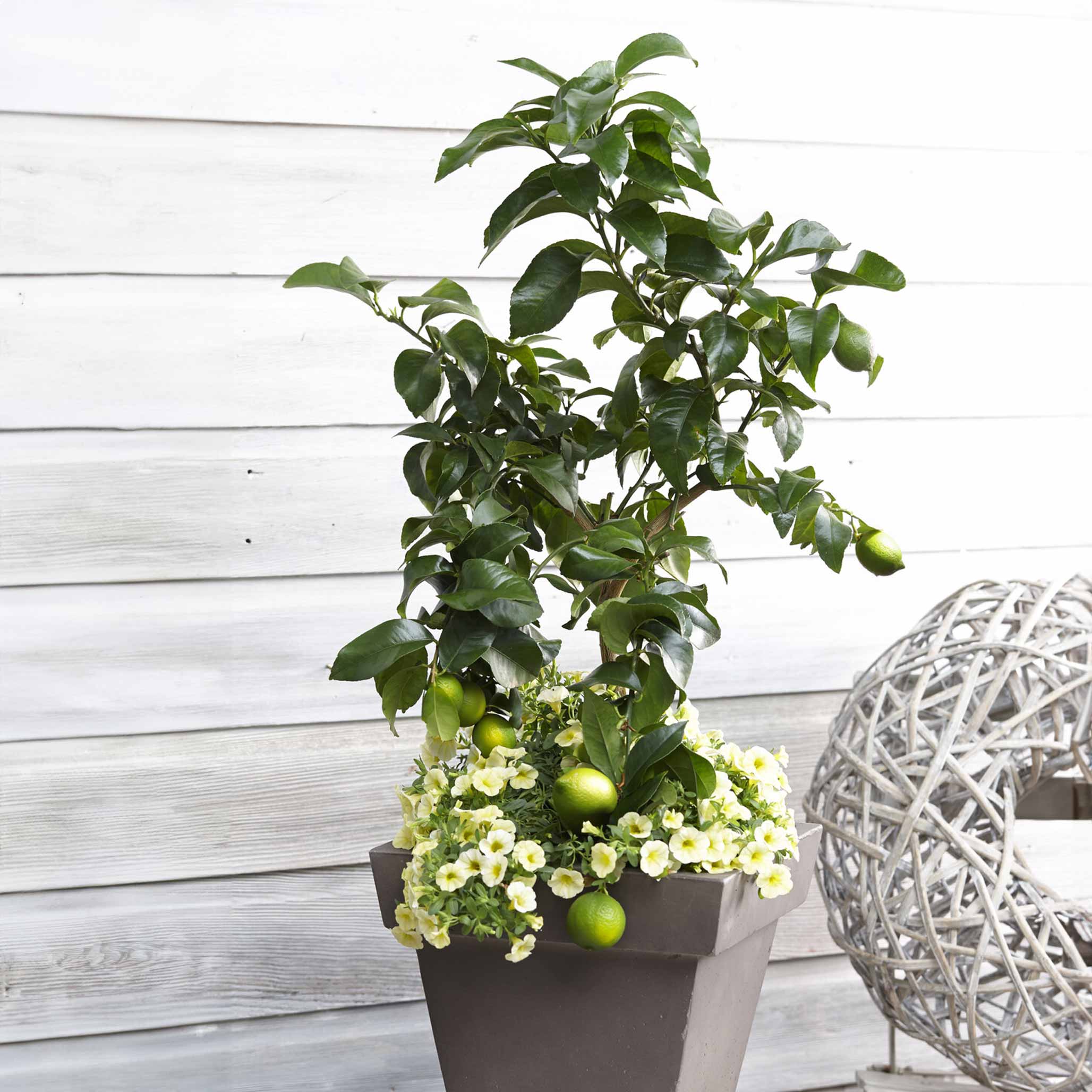
Plants 101
Citrus Trees 101: Care
Citrus trees, with their fragrant blossoms and vibrant fruits, can be a delightful addition to any garden or patio. In this article, we'll cover everything you need to know about growing and caring for citrus trees.

Whether you dream of plucking fresh oranges, lemons, or limes from your backyard or nurturing a small potted tree indoors, proper care is essential for healthy growth and abundant harvests. Planting and caring for citrus trees may seem intimidating at first, but with the right guidance, it can be an enjoyable and rewarding experience. From selecting the perfect variety to ensuring they thrive year-round, we’ll walk you through the key steps to plant and maintain your citrus trees, so you can enjoy fresh, homegrown fruit in no time!
Choosing the Right Citrus Tree
Citrus trees are sensitive to cold, so understanding your USDA hardiness zone is a good place to start, especially if you plan on growing your trees outdoors. Zones 9-11 are ideal for citrus trees like oranges, lemons, limes, and grapefruit, as they require warm temperatures year-round. If you live in a colder zone, look for cold-hardy citrus varieties that can withstand frost such as kumquats or satsuma mandarins, which are better suited for slightly colder environments. You can also plant citrus trees in pots and bring them inside during winter if your climate isn’t suitable!
Planting Your Citrus Tree
Sunlight
When planting citrus trees in the garden, select a location that gets 6-8 hours of direct sunlight each day to encourage healthy fruit production. Avoid areas under larger trees or near structures that could block sunlight. If you're growing citrus trees indoors, place them in a south-facing window or use grow lights to ensure they get enough light. Insufficient sunlight can lead to poor growth, weak branches, and reduced fruit production.
Soil and Planting
Citrus trees thrive in slightly acidic, well-draining sandy loam soil. Proper drainage is crucial since citrus trees are sensitive to waterlogged soil, which can lead to root rot. Plant them in areas with good water runoff and avoid low-lying spots where water may pool. If you need to improve soil that is either heavy in clay or sand, you can add amend the soil with organic matter such as compost or aged manure.
After planting, apply a 2–3 inch layer of organic mulch around the base, keeping it a few inches away from the trunk. Mulch acts as a protective layer that helps retain soil moisture, reducing the need for frequent watering, while also suppressing the growth of weeds! Organic mulches such as wood chips and bark are excellent for citrus trees as they help retain moisture and improve soil health. Inorganic options like gravel or rubber mulch can also be used but may require more maintenance and don't enrich the soil.
For citrus trees in containers, choose a planter that is 1-2 inches larger in diameter with drainage holes and use a well-draining potting mix. A good mix should contain components like peat moss, perlite, and pine bark to ensure proper aeration and moisture retention. Avoid using regular garden soil, as it can become too compact and cause drainage issues, leading to root rot.

Watering and Fertilizing
Newly planted citrus trees need consistent watering to establish their roots, generally requiring deep waterings once or twice a week depending on weather and soil drainage. For mature citrus trees, water deeply every 1-2 weeks, especially during dry spells, ensuring the soil dries slightly between waterings to avoid root rot. It will be crucial to water around the tree's drip line (outermost edge of the canopy), not just the trunk, to promote healthy root growth. Adjust watering based on rainfall and season, as citrus trees prefer slightly drier conditions during cooler months.
You can fertilize citrus trees with a citrus-specific or balanced fertilizer, generally every 4-6 weeks during the growing season (spring to early fall). Adding a slow-release fertilizer specifically designed for citrus trees can also help provide nutrients gradually over time as the trees grow. Choose a fertilizer rich in nitrogen, phosphorus, and potassium, along with micronutrients like magnesium and iron to prevent deficiencies.
For added soil fertility, incorporate organic amendments such as compost or well-rotted manure at the start of the season, which improves soil structure and promotes healthy root growth!

FAQs
Which citrus trees are self pollinating?
Most citrus trees are self-pollinating including Ponderosa and Meyer lemons, Calamondin trees, Persian Bearss Lime tree, and Key Limes to name a few!
How do you prune citrus trees?
You can prune citrus trees by removing any dead, damaged, or diseased branches and cutting back any crossing or crowded growth to improve air circulation. If desired, trim back any vigorous upright growth to maintain a balanced shape.
When should I fertilize my citrus tree?
Fertilize citrus trees every 4-6 weeks during the growing season, which is spring to early fall. You can apply your first dose in spring as new growth beings, and then again in late summer to support fruit development. Avoid fertilizing in the winter when the tree is dormant.
Conclusion
With a little love and attention, citrus trees can thrive and reward you with fragrant flowers and delicious fruit. Whether you're planting in the ground or nurturing a potted tree, following these guidelines will set you up for success!
Learn More

Words By The Sill
Empowering all people to be plant people—a collection of articles from The Sill's team of plant experts across a variety of plant care topics to inspire confidence in the next generation of plant parents. Welcome to Plant Parenthood™.
Do Some Plant Shopping